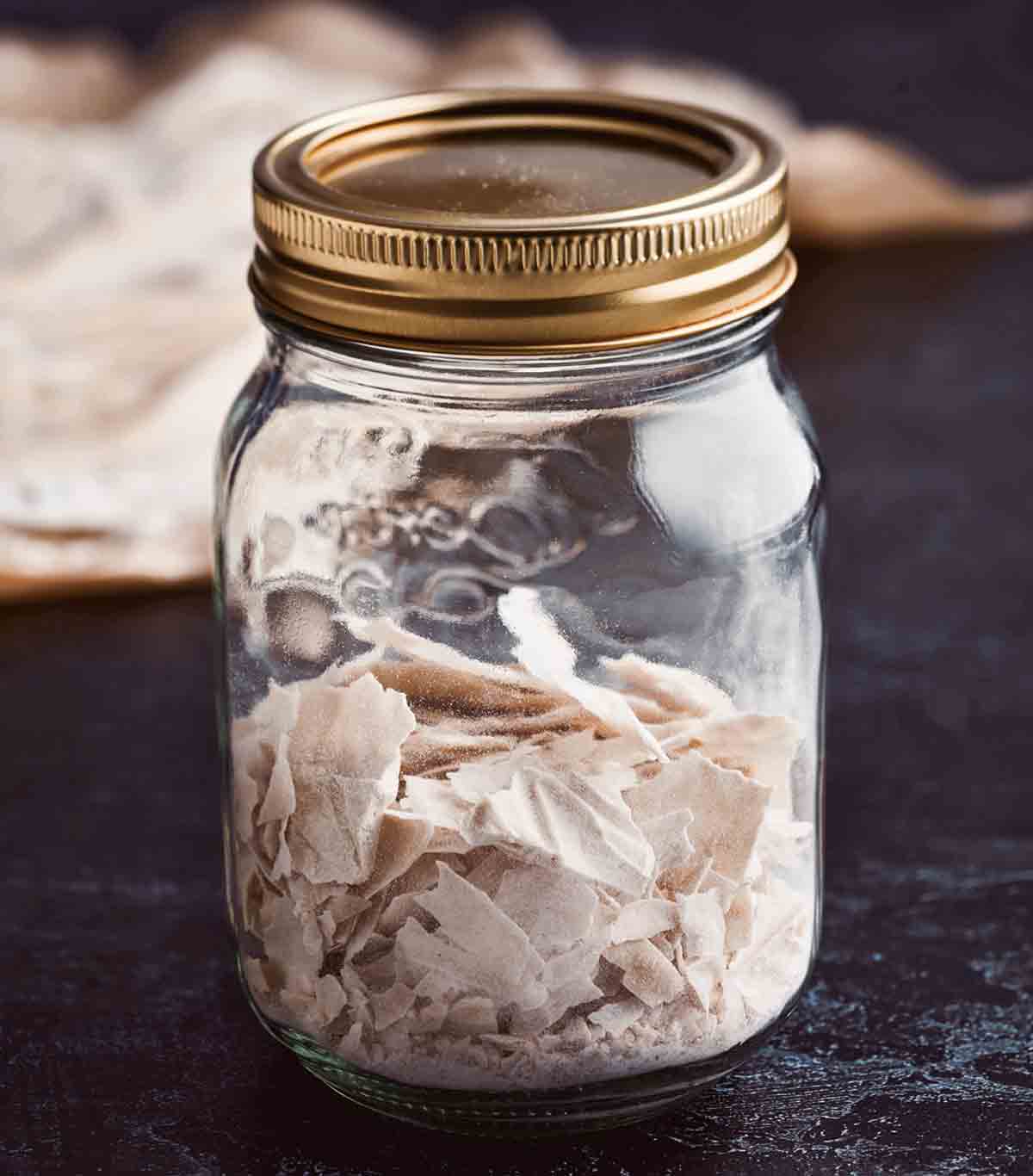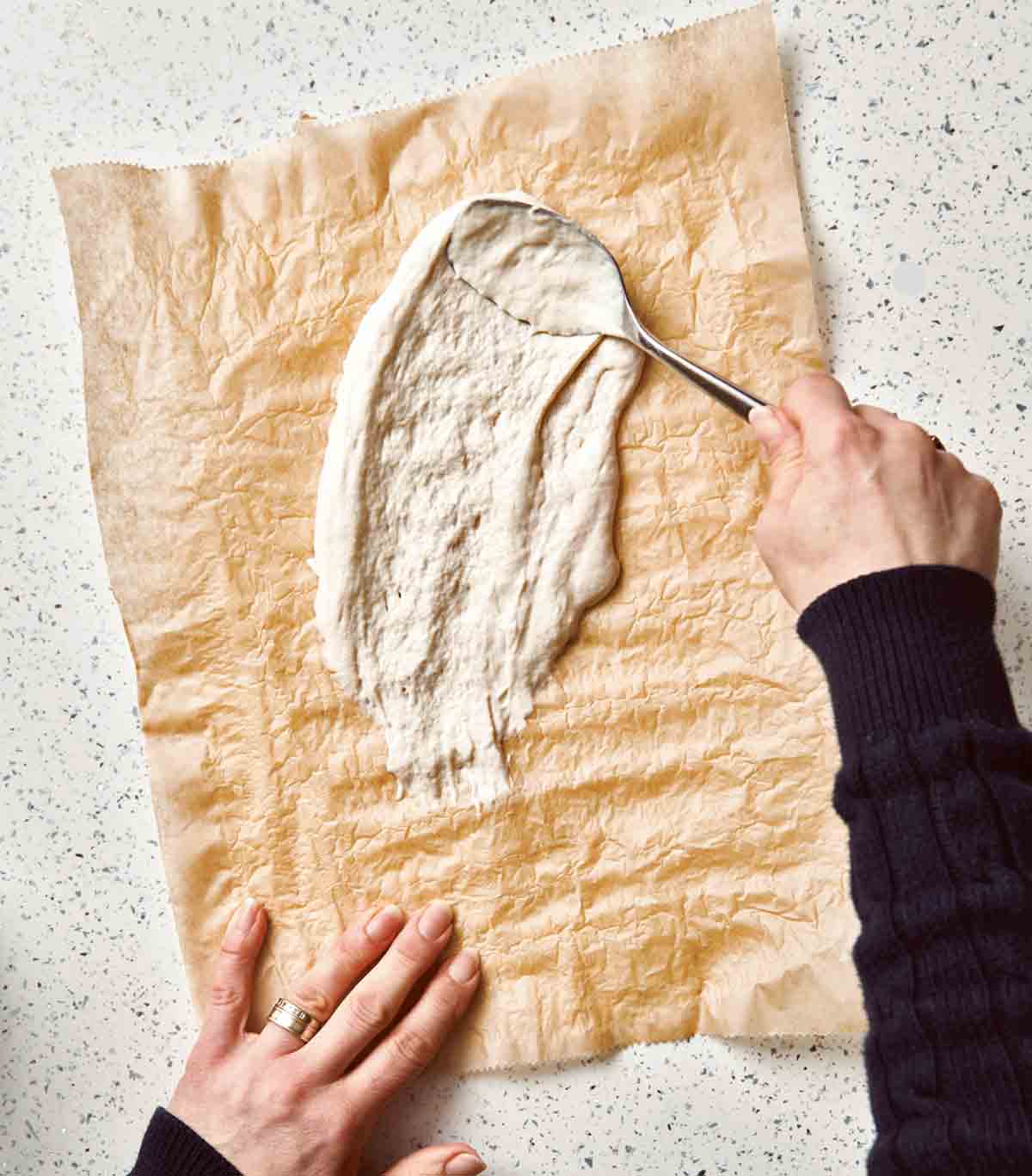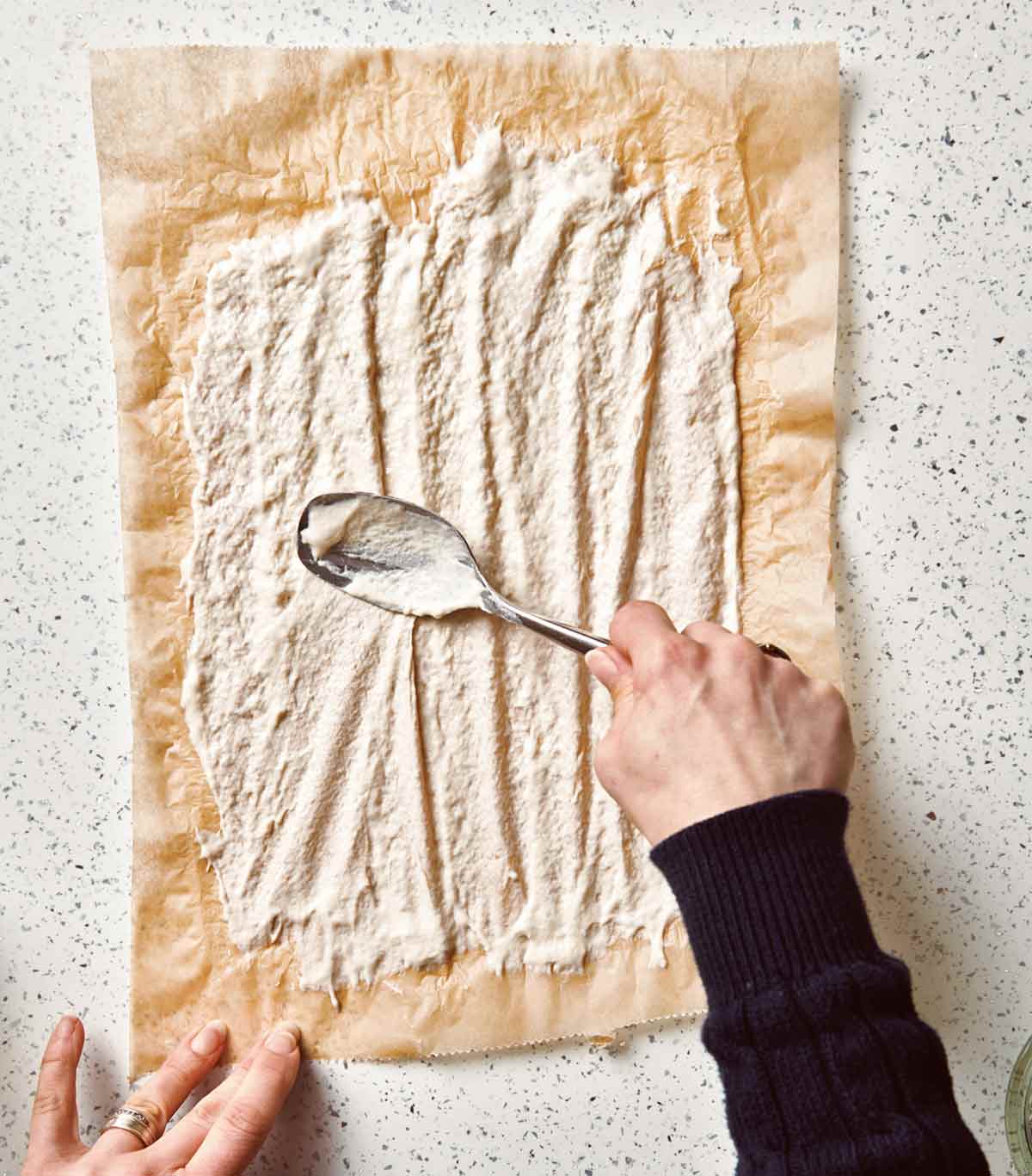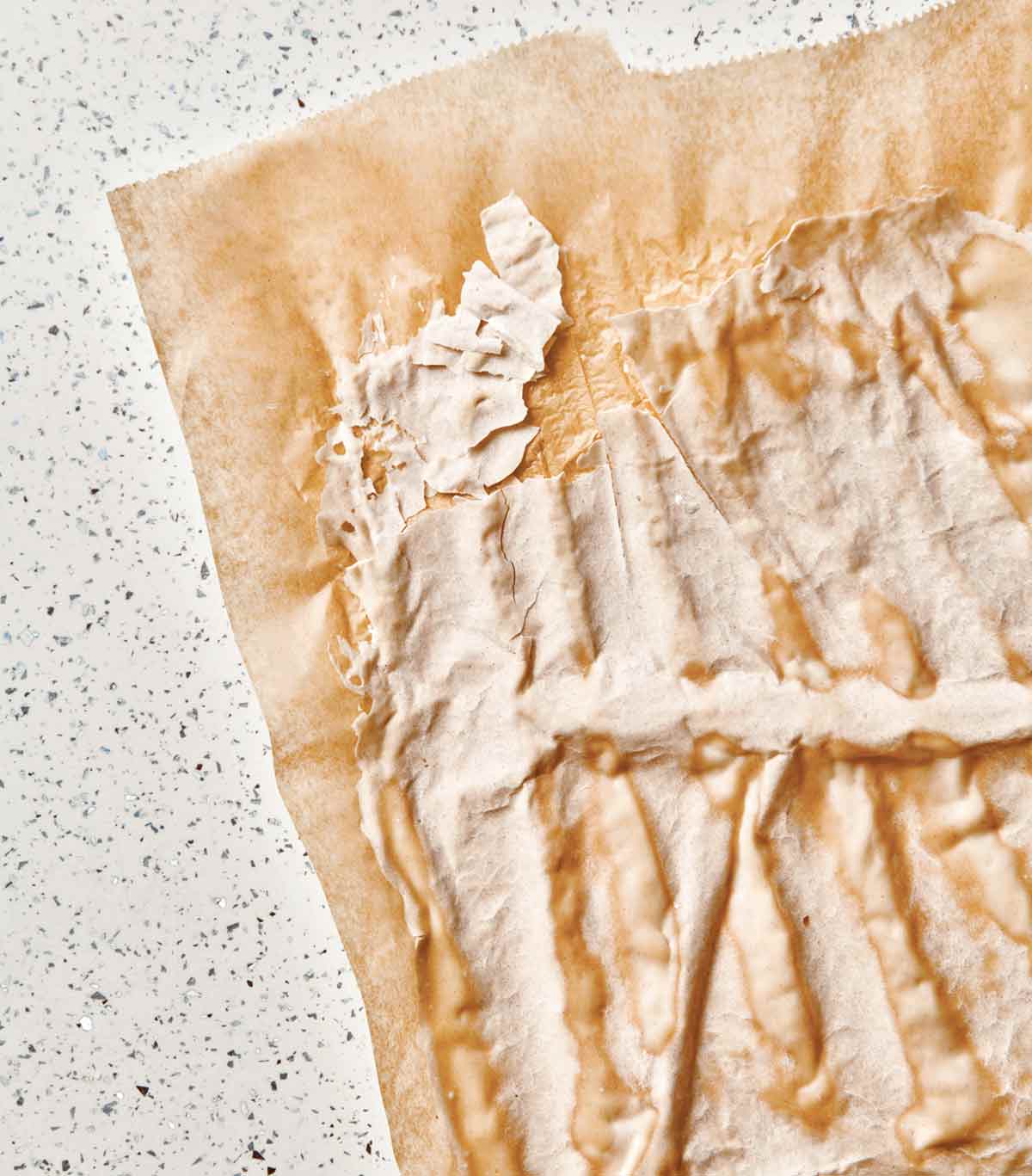
If you’re anything like us, you’ve nurtured your sourdough starter over the past two years and eaten and gifted your weight in sourdough bread, sourdough discard cookies, and waffles. You may be tired of the constant maintenance required to keep the starter alive, or perhaps you want a backup.
If you need a long-term storage solution for your starter that doesn’t require remembering to feed it at regular intervals, try this easy method for drying sourdough starter.
In a hurry? Here’s a quick-glance guide:
Simply put, dry sourdough starter is a starter that is slowly dehydrated so that it loses all it’s moisture and can be broken into pieces and stored.
Sometimes you want to take a break from baking with sourdough and drying it allows you to store it for a long time. Or, perhaps you want to give some to a friend. Dry starter ships well in the mail.
You sure can. See below.
It can last for years in a dark dry place. Remember, humidity is the enemy of a dehydrated starter.
Yes. As soon as you remove the dry starter from the parchment, slip it into a zip-top bag and freeze indefinitely.
The dehydrated starter we like a lot is from Breadtopia.

1. Gather your equipment
- Your starter
- Good-quality parchment paper or a silicone baking sheet
- A clean stainless-steel tablespoon
- A fine-mesh food cover
2. Prep your starter
Feed your starter, with flour and water as you normally would, and allow it to grow and respond.
I’d recommend feeding your starter two or three times your usual feeding amount to produce a more active starter on this occasion and maximize this drying opportunity.
3. Dehydrate your starter

Want to Save This?
Once the starter is active, lay a large sheet of good-quality parchment paper or a silicone baking sheet on an area of your kitchen counter where it can remain for 2 to 3 days.
☞ TIP: Don’t use waxed paper or a paper towel; the starter will stick and won’t come off once dried.
Spoon some onto the parchment, leaving your standard base amount of starter in the bowl or jar. Using the back of the spoon, spread the starter as thinly as possible on the paper. The thinner it is, the faster it’ll dehydrate. Try as much as possible to avoid creating thick spots; any globs will take a very long time to dry completely.

4. Cover it up
Cover the paper with the mesh food cover and leave for 2 to 3 days, or until completely dry. I always air dry mine at room temperature; if you have a dehydrator, you can make it go faster.
5. Store your dried starter

Once dried, it will be a darker color and will start to lift off the sheet by itself. Fold the sheet to break up the starter. (This way, you don’t need to actually handle it.) Make sure the starter is completely dried to prevent it from developing any mold in storage. If it bends in any place instead of breaks, it needs to keep drying—return the sheet to your counter to dehydrate until your starter is fully ready to store. Tip the broken bits into a clean jar. You can leave it in larger pieces or break it down more in a clean blender.
6. Revive your dried starter
Now, test your starter to ensure that it will revive successfully.
How to revive dehydrated starter
In a bowl, mix 20 grams (1/8 cup) of the dried starter pieces with 80 grams (3/4 cup) of flour and 90 grams (1/4 cup plus 2 tablespoons) of water. It will be a thick mixture. The starter will not dissolve; you will be able to see it still in the mixture.
Stir it well, firmly cover the bowl and leave it for 24 to 36 hours to bubble up and fully come back to life, stirring a couple of times during that time. Once it is fully revived, use it for sourdough bread, English muffins, waffles, pizza crust, or any of your other favorite sourdough foods.
7. What can I do with dry sourdough starter?
You can now gift and send portions of the dehydrated starter to friends and family so that they can share your sourdough joy, or you can store it in an airtight container in a cool, dark place for several months or even years. I have successfully revived dried starter after several years.
Once you have a stock of dehydrated starter, you have some insurance. If your starter ever starts to behave differently and becomes weak or inactive, add 15 grams (1 tablespoon) of your dried starter to your starter. Stir well, cover, and leave it for 24 to 36 hours to respond. It will boost your starter with its own saved power.
Originally published May 8, 2022










What a great idea! With no travelling for the last two years, I haven’t had to worry about what to do with my starter. Even though “Esther” is quite forgiving, sometimes after vacation she’s a little shy… I used my dehydrator set at 95F for ten hours then vaccum sealed in mason jars. My test worked wonderfully, so I still have a fresh batch in the fridge. Looking forward to taking some of these dried sourdough chips to share with friends and family!
Ilda, these look AMAZING!! I think you have enough dried sourdough starter to start a business! Gorm3sa’s Dried Sourdough Starter Emporium!
Love it !… ?… don’t think the thought hadn’t crossed my mind… “emporium” sounds grand! Muah!
Ha!!
What is a fine mesh food cover?
Okokimup, it’s a domed cover made from nylon or metal that sits over your food to protect it from insects or other things in the air. You can find them online, and I’ve included an example here.